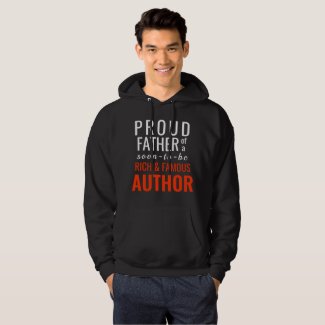Who’s Narrating Your Story?

Originally published 18/02/2018
Broadly speaking, the text of a piece of prose can be divided into two parts: the dialogue (the words the characters say to each other) and the narrative (the other words which describe all the stuff that’s happening). I’ll maybe talk about dialogue another day (in fact, I already have) but for now I want to talk about narration; or, to be more precise, the narrator. Just who is it that’s telling your story?
‘Well…’ I hear you tentatively cry. ‘It is I, the author, who tells the story… right?’
Sort of.
When we talk about the narrator, what we are referring to the perspective from which the story is being told. This may be a character in the story or it may be a nameless outsider. But whenever we read a portion of narrative, we’re hearing somebody’s voice, even if it is just a voice you, the author, have chosen for yourself.
Choosing the right narrative voice for your story is no marginal issue. It deserves serious consideration. An omniscient narrator, who knows everything but has no personal interest in the events described will tell a story in an entirely different way from one of the central characters.
So, how do you choose? As the author, you can (and probably should) experiment with a few different styles of narration to see what works, but let’s have a look at a few of your options to get you started:
First Person Narrative
This is a story in which the narrator is a specific character (not necessarily the protagonist) who tells the story from their own perspective, using pronouns like ‘me’ and ‘I’ to describe this character. For instance, Stephen King’s The Green Mile is told from the perspective of the protagonist, Paul Edgecomb.
Benefits: It’s a great way to garner the audience’s sympathy for a particular character, especially if you’re wanting the audience to sympathise heavily with a character besides the protagonist.
Drawbacks: A first person narrator cannot give us first-hand information about events they did not personally witness. You have to work within the confines of that one characters perceptions from start to finish.
Tip: When using first person, voice is more important than ever. Be sure to write using only the kinds of vocabulary and turns of phrase you would expect that character to use. Also be sure to let that character’s beliefs, biases and interpretations of events shine through in the narrative.
Second Person Narrative
This is a story in which you, the reader, are referred to as a character in the story. This is quite rare in prose, though not unheard of. For instance: “With his head cocked on the pillow and his hair combed just so, you couldn’t see where his brother conked him, and Eric, for his part, went easy, even came to the funeral in irons and his Sunday suit” (Stewart O’Nan, A Prayer for the Dying, emphasis mine).
Benefits: It has the potential to draw your reader into the story in an unusual and interesting way.
Drawbacks: Unless you’re writing a ‘Choose Your Own Adventure’ style story, it has the potential to seem pretentious if it is not executed with skill. Additionally, if the “you” character behaves differently to how your audience is inclined behave, you may end up undermining the effect you seek to create.
Tip: Ask yourself honestly why you’re using this. If it makes your story work, great. Do it with my blessing. But if you’re just doing it to be a smart Alec, reconsider.
Third Person (Omniscient)
The story is told from the point of view of an all-knowing, all-seeing outside observer, referring to characters only by name or with pronouns like ‘he’, ‘she’ or ‘they’; never ‘I’, ‘you’ or ‘we’. In this style of narration, the narrator knows everything there is to know about the story, and the audience can therefore be made privy to the thoughts, actions and feelings of every character.
Benefits: You can share whatever facts with your audience that you see fit. We can see the villains, scheming in their lair in one scene and in the next, see the protagonist flirting with the love-interest, all the while being privy to both characters’ thoughts.
Drawbacks: Too much information can rob a story of intrigue. In addition, this style of narration will not easily draw the reader into the plight of a particular character, since the action is all observed from a safe distance.
Tip: Try not to go overboard with the internal dialogues describing each character’s thoughts. These can become cumbersome, especially if they’re happening parallel to proper dialogue. Also, be sure to favour those characters you want your audience to sympathise with. Just because a narrator knows everything doesn’t mean they have to share everything.
Third Person (Limited)
The story is told by an outside observer but unlike ‘third person (omniscient)’, the narrator does not know everything. Instead they follow the comings and goings of one character in particular (usually the protagonist) and are privy only to his/her thoughts and feelings.
Benefits: This style of narrative allows you the freedom of a third person narrator while still garnering a lot of the audience sympathy you can generate using first person narrative. It also allows you to protect the audience from learning too much information too quickly (this is especially useful in mysteries, etc).
Drawbacks: It can be tempting to let slip something a second character is thinking.
Tip: A third person limited narrator is like a little stalker, following your protagonist around and reporting everything he does, thinks and feels. He’s too busy stalking your protagonist to stalk anyone else.
Unreliable Narrator
An unreliable narrator is one whose credibility is in doubt. It may be that they are being deliberately deceptive or it may be that they are simply mistaken in their interpretation of the facts. They may be trying to impose their own particular biases on the audiences. The narrator could also be a young child trying to explain complex, adult scenarios they they have become involved in but don’t fully understand. Whatever the reason, the story is conveyed in such a way that the audience has to think twice about taking the narrator’s every word as gospel. These are usually first person narratives.
Benefits: This style of narrative can be thoroughly engrossing and can leave your audience pondering the events of your story long after they’ve stopped reading it.
Drawbacks: It can also confuse your reader to death if the truth of your story is kept too obscure. Furthermore if the audience never suspects the unreliability of your narrator, they might end up believing something you had intended them to doubt.
Tip: Don’t have the narrator telling a pack of bald-faced lies only to confess the truth on the last page. That will just annoy the audience. Instead, subtly introduce the audience to the narrator’s biases, incapacities, delusions or errors early on, thus sowing doubt in the audience’s mind.
Follow Penstricken on Twitter, Tumblr, Pinterest and like Penstricken on Facebook.
Looking for a gift for the author or fiction lover in your life?
Check out the Penstricken Zazzle store!
Want a blog of your own? Start writing today with WordPress.com!
AUTHOR INTERVIEWS:
Unfortunately, I am unable to take on any more author interviews or solicited book reviews at this time.
You can check out our previous interviews here:
- Sharleen Nelson, author of The Time Tourists [2]
- D. Wallace Peach, author of the Shattered Sea duology [2]
- Jacob Klop, author of Crooked Souls
- H.L. Walsh, author of From Men and Angels [2]
- G.M. Nair, author of Duckett and Dyer: Dicks for Hire
- Georgia Springate, author of Beyond
- S.E. Morgan, author of From Waterloo to Water Street
- Megan Pighetti, author of Fairy-Tailed Wish [2]
- Nancet Marques, author of Chino and the Boy Scouts [VIDEO]










